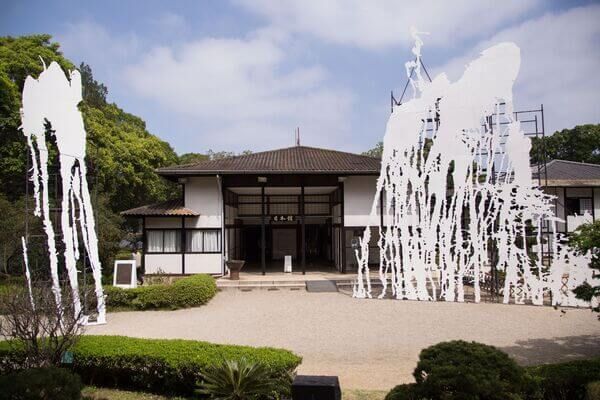Community Project
Introducing to painting – 5to grado Primaria “Filomeno Mata”, San José Manialtepec / Cooperativa de Ecoturismo del Zapotalito
For this project, we worked with two groups; one with 8 members from the Zapotalito Ecotourism and another one with 15 children of 5th grade from the Filomeno Mata Primary School of San José Manialtepec.
The main objective was to create with the participant’s new perspectives of their environment, destroying preconceived ideas of painting and art in general. Creating two murals in the ambiance of each group; one inside the Primary School and another in the Community Museum of the Ecotourism Cooperative. Each mural is made up from portraits that each participant made of his companions, including not only the image of the face, but also elements that each one considers representing their tastes, where they live and dreams.
The murals were painted among all the participants, following the instructions and techniques of the resident. “I’ve learned that if you draw badly, it does not matter; the point is to paint and develop characteristics of the person.” Yessica Marleni Salinas Gaspar (10 years old).
For this project, we worked with two groups; one with 8 members from the Zapotalito Ecotourism and another one with 15 children of 5th grade from the Filomeno Mata Primary School of San José Manialtepec.
The main objective was to create with the participant’s new perspectives of their environment, destroying preconceived ideas of painting and art in general. Creating two murals in the ambiance of each group; one inside the Primary School and another in the Community Museum of the Ecotourism Cooperative. Each mural is made up from portraits that each participant made of his companions, including not only the image of the face, but also elements that each one considers representing their tastes, where they live and dreams.
The murals were painted among all the participants, following the instructions and techniques of the resident. “I’ve learned that if you draw badly, it does not matter; the point is to paint and develop characteristics of the person.” Yessica Marleni Salinas Gaspar (10 years old).



Japan
Nagasaki, 1985
The painting of Takanori Suga often refers to graffiti, or a form of street art in which human existence is evidenced through inscription of one’s signage or a symbolic image it represents. Suga’s outright method to interfere into public landscape, and his skills to layer and compose images on canvas, allow him to question a fundamental desire of human beings towards the act of painting, and painting as a means to leave mark of one’s existence.
Liquid splashes and drippings– a method he calls tarashi – is a signature of his painting style. For Suga, tarashi implies a wide genre of artic expressions from ancient murals to street art: a sign of human existence or an impulse of human life which is drawn and inscribed directly into urban landscape.
In addition, many of Suga’s work appropriate visual patterns found in local – and segmented — mass culture, such as decotora, logistic trucks with excessive light decoration found in rural Japan, mass produced corporate character in product design, Aboriginal Art in Australia as he lived there for a year. Suga’s observation in rural culture is evident in many of his work.
Past exhibitions include: KOSHIKI ART EXHIBITION 2012 (2012, Kagoshima), Dripping Project, Kyoto Prefectural Office Old Building Musee Acta (2013), Komagome Warehouse (2015). He received the Grand Prix in the “ART IN THE OFFICE Program”, Monex, Tokyo. Suga holds a degree in Aichi Prefectural University of Fine Arts and Music.
Liquid splashes and drippings– a method he calls tarashi – is a signature of his painting style. For Suga, tarashi implies a wide genre of artic expressions from ancient murals to street art: a sign of human existence or an impulse of human life which is drawn and inscribed directly into urban landscape.
In addition, many of Suga’s work appropriate visual patterns found in local – and segmented — mass culture, such as decotora, logistic trucks with excessive light decoration found in rural Japan, mass produced corporate character in product design, Aboriginal Art in Australia as he lived there for a year. Suga’s observation in rural culture is evident in many of his work.
Past exhibitions include: KOSHIKI ART EXHIBITION 2012 (2012, Kagoshima), Dripping Project, Kyoto Prefectural Office Old Building Musee Acta (2013), Komagome Warehouse (2015). He received the Grand Prix in the “ART IN THE OFFICE Program”, Monex, Tokyo. Suga holds a degree in Aichi Prefectural University of Fine Arts and Music.







